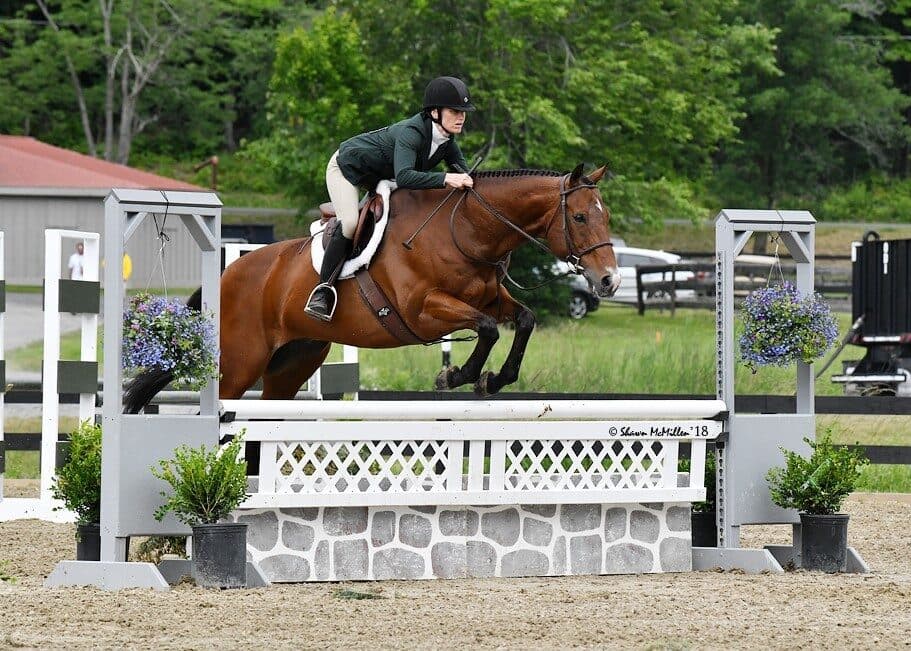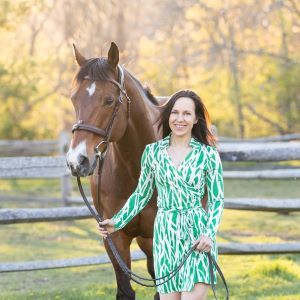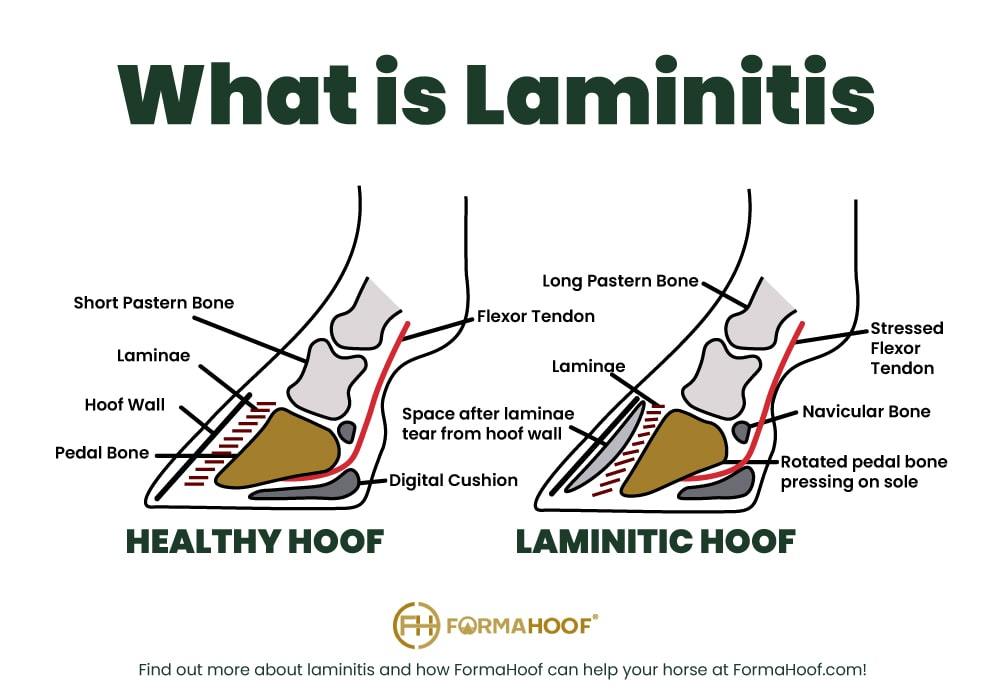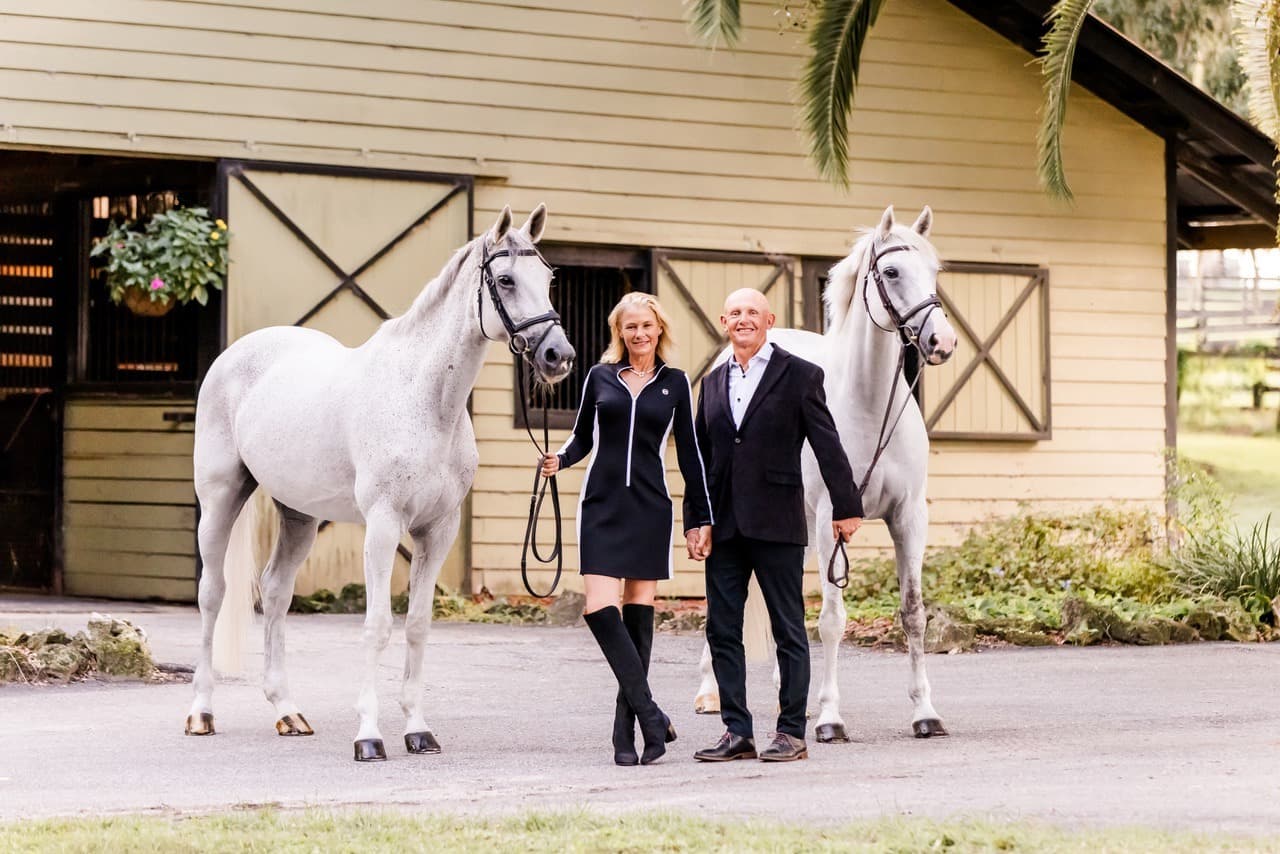Recovering from Laminitis: A Success Story

On March 18, 2019, I got to the barn before sunrise like I did every morning, and this time I was looking forward to celebrating What A Trippi's 16th birthday with some special treats and a ride. The second I opened his stall door to throw him some hay, I knew something was wrong. He was standing just off enough to raise an alarm.
I took him out of his stall and it was evident immediately that taking those few steps was very painful. My heart sank. I ran my hands down his legs and by the time I got to his feet, I knew what was going on. The heat was evident immediately. I called my veterinarian and he came right over. After some diagnostics, we were looking at one of a horse person’s worst fears -laminitis.
The weeks that followed were some of the most stressful of my life. I was at the barn multiple times a day to administer medication, ice his feet then wrap them, using foam insulation custom cut to provide cushion - his own little memory foam sneakers. What A Trippi was never known for his cooperative disposition, but I knew he was a tolerant patient for every part except standing in ice. I spent a lot of those early spring mornings soaked as he knocked the bucket over onto me.

The progress was slow. Every morning, I would call my veterinarian in tears that today was the day and we had to let him go. Every morning, Dr. Sheehan would tell me to give it one more day. He eventually "one more day"-ed me to the other side of it.
The work and the research that the Grayson-Jockey Club has done towards laminitis is what gave us a fighting chance. Make no mistake, we got very lucky. But, with continued support of the research that is being done, you can help stack the deck in the favor of many other horses who are struck with this devastating diagnosis.
The Quest to End Laminitis Continues
By Dr. Andrew Van Eps

Laminitis is a disease in which the tissues that attach the hoof to the underlying coffin bone become damaged and inflamed. It can be devastating for both horse and owner. It not only leads to loss of performance but is second to colic as the biggest cause of premature death in horses. There are three “types” of laminitis.
Hyperinsulinemia-associated laminitis (HAL) generally occurs secondary to equine metabolic syndrome and pituitary pars intermedia dysfunction (PPID, equine Cushing’s disease) and is due to high levels of insulin in the blood directly damaging the feet. Sepsis-related laminitis develops following a systemic illness such as colitis (inflammation of the colon), metritis (inflammation of the uterus), pneumonia, grain overload, etc. Lastly, supporting limb laminitis is a complication of musculoskeletal injury in the contralateral (opposing) limb, causing the horse to change weight bearing patterns and preferentially bear excessive weight on the supporting limb.
Recent Grayson-Jockey Club Research Foundation funded research has shed light on the mechanisms that lead to supporting-limb laminitis, the most important barrier to successful treatment of breakdown injuries in racehorses. New evidence shows that increases in weight bearing combined with a lack of normal load cycling (walking steps or static weight shifting) interfere with normal blood perfusion in the foot, triggering laminitis. Interestingly, damage may affect all limbs but is magnified in the limb opposite the primary injury due to the increased weight-bearing load. Current research is focused on using foot mounted sensors to track limb movement and identify the patterns that precede laminitis, as well as testing methods to increase blood perfusion in the foot even when overloaded.
Recent Grayson-funded research on cryotherapy (foot cooling) shows that it can help to prevent laminitis and improve outcomes for horses suffering acute laminitis when used as first aid. Experimental studies have shown that cryotherapy can prevent laminitis specifically in septic patients (e.g., colitis, pneumonia) and can also be an effective first aid treatment for this type of laminitis even after lameness has developed.
Recently, researchers have shown that cryotherapy can also prevent the development of HAL in an experimental model, supporting the use of foot cooling in patients with this form of laminitis as a first aid measure. Ongoing Grayson-funded research includes the testing of novel therapeutics to prevent and treat HAL by targeting insulin production and its effects directly on the tissue.
What exactly is cryotherapy treatment?

The goal is to cool the feet consistently while the horse is at high risk of laminitis development, or for the first few days after development as a first aid therapy. Effective foot cooling requires application of a cooling device from the knee/hock down. Basic methods include ice sleeves, ice pack wraps, and ice boots, or even tethering a horse in a stream or pool of cold water for an extended period. Other methods involve the recirculation of refrigerated water using recirculating pumps. An ideal method that enables consistent and continuous cooling for several days is yet to be developed; however, the safety and efficacy of cryotherapy has been established.
What is being learned?
In horses with painful injuries such as fractures, early identification of the risk of supporting-limb laminitis may be enabled by real-time analysis of motion data from foot-mounted sensors. Measures to help promote limb load cycling and facilitate blood perfusion (even in the overloaded limb) may help prevent laminitis in these cases. For HAL, control of blood insulin through careful feed/management (as well as medication in some cases) is the key to prevention. Cryotherapy is a proven means of preventing and treating acute laminitis and is a critical first aid strategy, regardless of the underlying cause.
In general, owners and veterinarians can follow these four treatment strategies to help horses suffering from acute laminitis:
- Apply cryotherapy as first aid to limit disease progression
- Provide pain relief and reduce inflammation with non-steroidal anti-inflammatory drugs
- Restrict the horse’s movement via stall rest to help limit mechanically-induced damage
- Pursue orthotic/corrective shoeing
Cryotherapy has helped many horses, including grade 1-winning Thoroughbreds Bal a Bali,Lady Eli, Lord Nelson, and Paynter, overcome laminitis. Lady Eli and Bal a Bali returned to successful racing careers, while the others were saved to become pasture-sound breeding animals. Continued research will save more animals in the future. Co-registered PET and Robotic CT Imaging of Feet Grayson-Jockey.
Jessica Paquette is an avid horsewoman and has held many jobs in the equine industry. She is the only full-time, year-round female track announcer in the United States. She has overcome many challenges professionally and personally. She joins us to tell us how she prevailed in flighting laminitis with her horse What A Trippi.
Dr. Andrew Van Eps, the Dean W. Richardson Professor of Equine Disease Research at the University of Pennsylvania School of Veterinary Medicine, has conducted multiple projects funded by Grayson-Jockey Club Research Foundation.
About Grayson-Jockey Club Research Foundation
Grayson-Jockey Club Research Foundation is traditionally the nation’s leading source of equine research funding. The projects it supports enhance the health and safety of horses of all breeds. Additional information about the foundation is available at grayson.jockeyclub.org. To learn more about the new projects funded by the Grayson-Jockey Club Research Foundation in 2024, click here.














